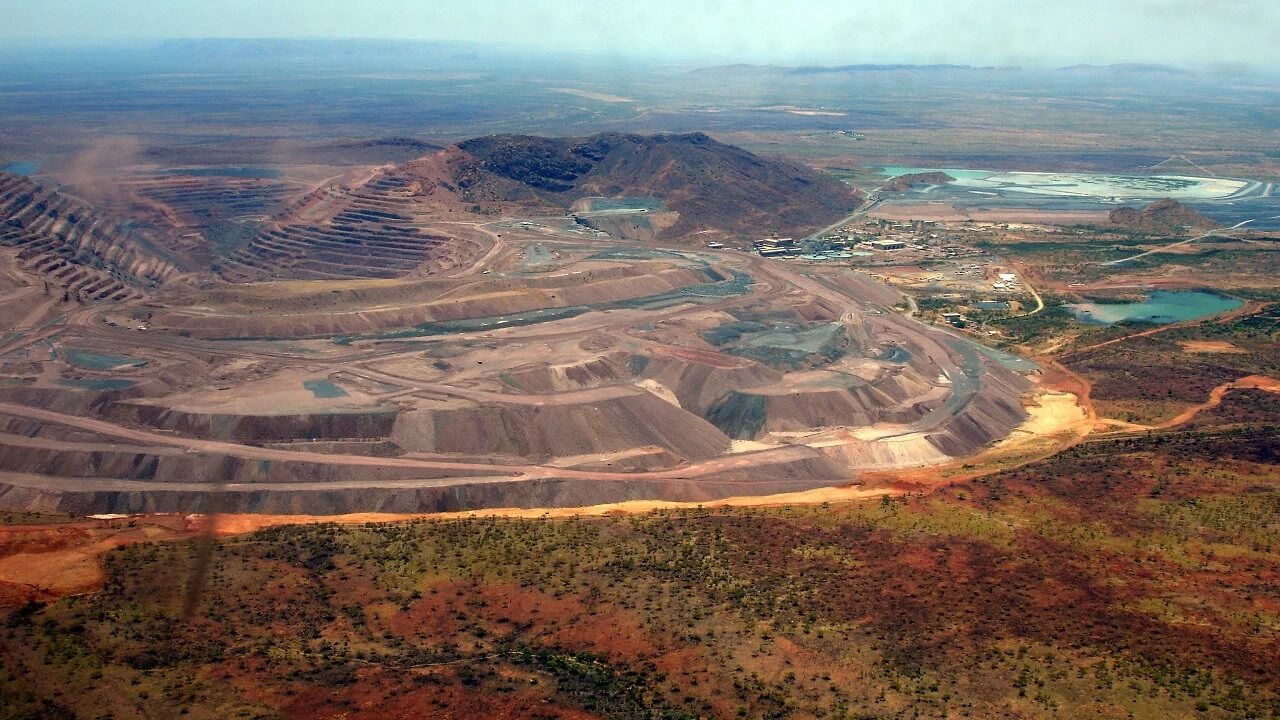Nestled deep within the rugged landscapes of Western Australia lies a treasure trove that has captivated the world with its unique and exquisite diamonds—the Argyle Diamond Mine. Renowned for producing some of the most rare and coveted diamonds on the planet, including the famed Argyle Pink Diamonds, this mine has etched its place in the annals of the diamond industry. In this article, we will delve into the captivating journey of the discovery of the Argyle diamond deposits, explore the diverse range of diamonds it yields, discuss the geologic setting that makes it a geological marvel, and unravel the meticulous process of diamond sorting and valuation that contributes to the allure of these Australian gems.
Discovery of the Argyle Diamond Deposits
The discovery of the Argyle Diamond Deposits stands as a testament to the unpredictable nature of geological exploration and the transformative impact it can have on an industry. The story begins in the early 1980s when a team of geologists, led by Dr. John Gurney, embarked on a mission to explore the remote East Kimberley region of Western Australia.
At the time, Australia was not widely recognized as a significant player in the global diamond market. The focus of exploration efforts was primarily on finding industrial-grade diamonds rather than the rare and coveted gem-quality stones. The East Kimberley region, with its vast and rugged landscapes, seemed an unlikely candidate for a diamond discovery.
However, the geologists were in for a surprise. In 1979, after several years of exploration, the team stumbled upon a deposit of diamonds in the vicinity of Lake Argyle. Initially intended for industrial use, these diamonds soon revealed themselves to be of extraordinary quality, setting in motion a chain of events that would redefine the perception of Australian diamonds.
The significance of this discovery became apparent when gem-quality diamonds, particularly the elusive pink and red varieties, were unearthed. The geological conditions in the East Kimberley region, characterized by ancient volcanic activity and tectonic forces, provided the perfect crucible for the formation of these exceptional diamonds.
The discovery of the Argyle Diamond Deposits not only put Australia on the map as a significant diamond-producing country but also challenged traditional notions about the sources of high-quality gemstones. The mine’s unexpected transformation underscored the importance of continued exploration and the potential for groundbreaking discoveries in the most unlikely corners of the Earth.

Over the years, the Argyle mine has played a pivotal role in shaping the diamond industry, contributing not only rare and exquisite gems but also influencing market dynamics and consumer preferences. The tale of the Argyle Diamond Deposits serves as a reminder that, in the world of geology and gemology, the most extraordinary treasures often lie hidden in plain sight, waiting to be unearthed by those with the vision to explore beyond conventional boundaries.
Argyle Pink Diamonds
One of the crown jewels of the Argyle Diamond Mine is undoubtedly the Argyle Pink Diamond. Known for its mesmerizing hues ranging from delicate pinks to intense purples, these diamonds are exceptionally rare, comprising less than 0.01% of the mine’s total output. The geological conditions unique to the Argyle mine, combined with intense pressure and heat, contribute to the formation of these breathtakingly beautiful pink diamonds. With the mine’s imminent closure in 2020, the scarcity of Argyle Pink Diamonds has only heightened their desirability among collectors and investors.
Argyle Champagne and Brown Diamonds
Beyond its famed pink diamonds, the Argyle mine also produces a spectrum of natural colors, including champagne and brown diamonds. These diamonds, often overlooked in the shadow of their pink counterparts, possess a distinct and warm beauty. The geological processes that give rise to these earth-toned diamonds create a diverse palette that has gained recognition in the global market. The Argyle Champagne and Brown Diamonds add a touch of warmth and elegance to the world of diamond jewelry, appealing to those who seek a unique and understated luxury.
Geologic Setting of the Argyle Mine
The geological setting of the Argyle Diamond Mine is a fascinating narrative that intertwines ancient processes, tectonic forces, and volcanic activity, culminating in the creation of one of the world’s most renowned diamond deposits. Situated in the remote East Kimberley region of Western Australia, the mine owes its unique characteristics to the intricate dance of geological events that transpired over millions of years.
Fast forward to the 1980s when the Argyle Diamond Mine was established. The mine primarily exploits the AK1 pipe, a specific kimberlite pipe that has become synonymous with the Argyle mine’s diamond production. The AK1 pipe is characterized by its elliptical shape and its extraordinary wealth of diamonds, ranging from the famed Argyle Pink Diamonds to a diverse array of colors, shapes, and sizes.
The longevity of the geological processes that shaped the Argyle Diamond Mine is a testament to the stability of the Kimberley craton and the endurance of the diamond-forming conditions. As a result, the East Kimberley region stands as a geological marvel, providing the world with not only a precious commodity but also a glimpse into the intricate workings of our planet’s geological history. The allure of Argyle diamonds, rooted in this unique geological setting, continues to captivate enthusiasts and collectors, adding a layer of geological mystique to these extraordinary gemstones.
Diamond Sorting and Valuation
The process of extracting and sorting diamonds from the Argyle mine is a meticulous and highly sophisticated endeavor. From the rough diamond extraction to the final valuation, every step is conducted with precision and expertise. The Argyle diamonds undergo a rigorous sorting process, where skilled gemologists meticulously evaluate each stone based on its size, shape, color, and clarity. The valuation of Argyle diamonds is influenced not only by traditional diamond grading criteria but also by the rarity and desirability of the unique colors that characterize this mine’s output.

Conclusion
As the sun sets on the illustrious Argyle Diamond Mine, its legacy endures through the exquisite diamonds that have graced the world’s most coveted jewelry pieces. The discovery of the Argyle diamond deposits, the allure of Argyle Pink Diamonds, the richness of Champagne and Brown Diamonds, the geologic marvel that is the East Kimberley region, and the meticulous process of diamond sorting and valuation together contribute to the extraordinary story of Australian diamonds. These gems, forged by the Earth’s ancient forces, continue to captivate the hearts of collectors, connoisseurs, and jewelry enthusiasts worldwide, leaving an indelible mark on the history of the diamond industry.